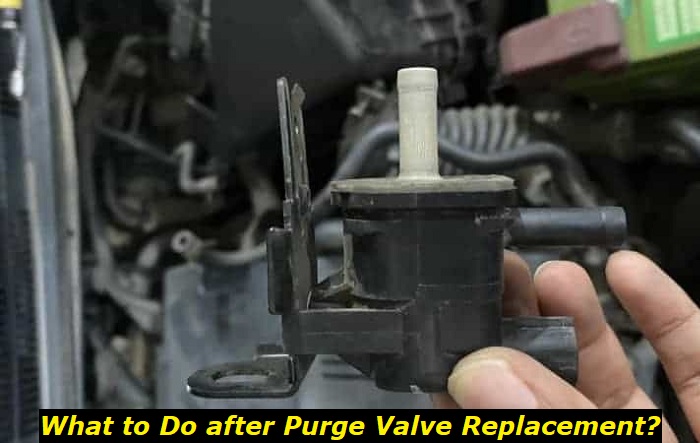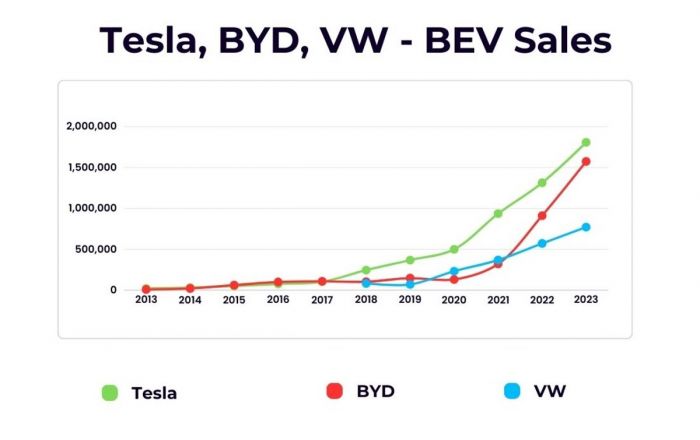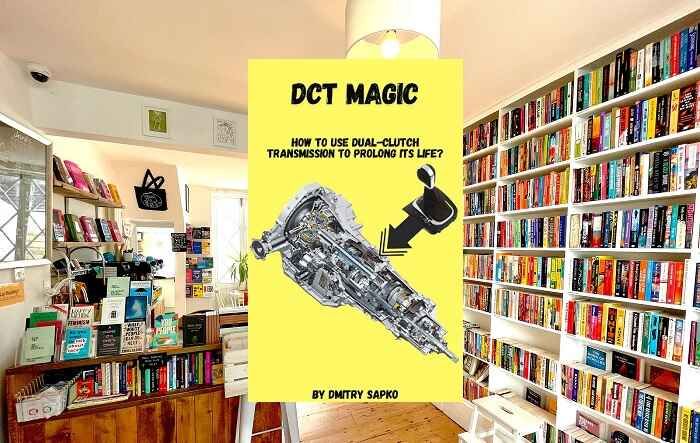The purge valve in your vehicle is a vital component in the evaporative emission control system, more commonly known as the EVAP system. Without a functioning EVAP system, your automobile will emit far more pollutants into the environment than it already does. Though automobiles contribute to environmental pollution, with the help of the EVAP system we can keep it minimal.
Purge valves are supposed to last as long as the vehicle, so if you are lucky, you will not run into any problems with the purge valve. But just like any other part in your car, the purge valve also deteriorates over time, and if you are one of those unlucky few who ends up needing a purge valve replacement, don't worry, purge valve replacements aren't that costly. And if you decide to do the repairs yourself, you should be able to manage it with a few tutorials online.

But the real question is what to do after replacing the purge valve, are any adjustments needed? Replacing the purge valve is just half the task. After replacing it, you need to clear the error codes, perform a functional test, and also check for any leaks. In most cases, you won't need to do any adjustments to the purge valve after installation. It's already calibrated to function optimally. But some types or models might require post-installation adjustments.
Here's what we are talking about today:
- What is a purge valve?
- Purge valve replacement
- What to do after replacing the purge valve
- When do you need adjustments?
What Is a Purge Valve
To understand what to do after replacing the purge valve, first, you need to understand what a purge valve is. Also known as canister purge valve, the purge valve is a part of your EVAP system. It keeps the fuel vapors in your tank trapped so that they don't escape. The purge valve operates with the help of a solenoid.
This helps it open and close as needed. Often when you have trouble with a purge valve, it is the solenoid that has failed keeping the purge valve stuck at an open or closed position.
When Do You Need to Replace a Purge Valve
Unlike an oil change or changing your filters, your purge valve doesn't have a certain expiration date. So, unless you are noticing symptoms of purge valve failure, you don't need to replace your purge valve. Here are a few symptoms to look out for:
1) Check Engine Light
The check engine light is the first indicator that your purge valve has failed. When your purge valve is faulty almost certainly the check engine light illuminates. This is because the purge valve is directly hooked up to the PCM.
The check engine light can light up for numerous reasons, so the next thing you need to do is connect an OBD2 scanner. If the codes indicate that your purge valve is faulty, you can go about getting it replaced.
2) Increased Fuel Consumption
When the purge valve fails, the fuel that is in a vapor state inside your tank floods into your engine. The onboard computer recognizes the fumes as air and sends more fuel into the combustion chamber. This means you'll start burning more fuel than usual. Not only will this drain your tank faster, but it will also result in an increased carbon build-up in your spark plugs and valves.
3) Rough Idling
When your car is consuming more fuel, it is also running rich. This happens when your purge valve is stuck in an open position. This will be more prominent immediately after you refuel. Once you refuel, a ton of gasoline fumes will be present in your tank. Without the purge valve to keep them contained, they find their way inside the combustion chamber. As a result, your engine starts to idle roughly.
4) Vacuum Leaks
This is a result of your purge valve getting stuck in a closed position. If it doesn't let the fumes out, the pressure inside starts to build up. Sooner rather than later, they'll crack your vacuum hoses. If this happens, you might hear a hissing sound when your car is at idle. The content of these vapors is hazardous to humans.
Purge Valve Replacement
If you notice any of the above symptoms, the next step is to get your purge valve replaced. Even if you are not an expert at auto repairs, this is a fairly simple procedure that you'd be able to manage. And considering that purge valves cost about $50, this isn't a costly repair either.
The trick is to first identify the location of the purge valve. This varies from vehicle to vehicle. To narrow down your search, the purge valve is located close to the fuel tank or the engine. The easiest way to find the purge valve is to refer to your owner's manual.
Once you locate the purge valve, you'll see that there are electrical connectors and vacuum hoses attached to it. Go ahead and get those detached. Don't be afraid to use some pliers if needed.
Finally, swap out the purge valve and reconnect the hoses and electronics as they were.
What To Do After a Purge Valve Replacement?
Replacing the purge valve is just half the task. Once the purge valve is replaced there are a few more steps to take to ensure that your repair procedure was successful and everything is working as it should.
1) Check For Leaks
Pressurized gasses are waiting for an opening to squeeze out. So, unless there is a secure fit, the fumes will leak out. And, since you'd be detaching and reattaching all your hoses, you should double-check those connections.
Look for any signs of leaks, fuel odors, wet spots around the valve, or even visible fuel drips. If you do notice any leaks address them immediately. Sometimes, your hoses might be damaged when prying them off the existing purge valve. If that's the case, you will have to replace those as well along with any other damaged components.
While you are double-checking the hoses, also make sure to check the electrical connectors. If the solenoids aren't getting power, you will notice the same symptoms as a purge valve failure.
2) Make Sure It Runs Smooth
When your purge valve functions properly, it's like it never exists. Fire up your engine and keep it idle for a few seconds letting the engine warm up. Keep your ears ready for any unusual noises. Any noises out of the ordinary would indicate that there is a problem with the installation.
3) Clear The Error Codes
Once you are satisfied with the replacement, connect an OBD2 scanner and clear the error codes that sprung the check engine light initially. Do a test drive and check whether the check engine light illuminates again. If it does, you need to go back to the drawing board as there might be an issue with the replacement.
Do You Need to Adjust the Purge Valve After Installation?
The idea of adjusting the purge valve after installation comes from the fact that some purge valves have adjustable components or settings to fine-tune their operation. These adjustments might be necessary for optimal performance in certain designs especially in certain after-market designs. By making these fine adjustments, you'd be able to maintain precise control over the purge flow rate and timing.
By fine-tuning the purge valve, you'll be able to customize its function based on the vehicle's needs and environmental conditions. You can adjust the purge valve for efficiency and optimize your EVAP system to comply with emission standards.
Purge valve adjustments are only necessary in certain cases:
- Customized Or Aftermarket Systems
If your car runs with an aftermarket EVAP system, you may have to adjust your purge valve to match certain configurations. These systems might have different flow rates, valve designs, or installation setups that necessitate calibration.
- Performance Modifications
If you've made performance upgrades like modifications to the engine system, exhaust, or air intake, your stock purge valve might not work. These modifications meddle with the fuel-to-air ratio inside your combustion chamber, so your purge valve should also be calibrated to suit the changes.
- Environmental Factors
Even though you rarely require purge valve adjustments due to environmental conditions, it's not unheard of. If you drive at high altitudes or extreme temperatures adjustments may be made to ensure the proper functioning of the purge valve and maintain optimal emissions control.
Conclusion
In most modern vehicles, the purge valve is already pre-calibrated for optimal performance. So, once you replace your purge valve, you don't need to worry about adjusting the purge valve further. Just make sure that the installation process was done properly so that you don't have any leaks or other damages to the EVAP system.
That being said, there are certain instances where purge valve adjustments might be necessary. If you run a customized engine or any other performance upgrades, you might have to adjust your purge valve for optimal performance.
The end goal when replacing a purge valve is to ensure the proper functioning of the evaporative emissions control system and compliance with emission standards. If you doubt that your purge valve is not calibrated properly or not functioning as it should, seeking professional help is always recommended.
About the authors
The CarAraC research team is composed of seasoned auto mechanics and automotive industry professionals, including individuals with advanced degrees and certifications in their field. Our team members boast prestigious credentials, reflecting their extensive knowledge and skills. These qualifications include: IMI: Institute of the Motor Industry, ASE-Certified Master Automobile Technicians; Coventry University, Graduate of MA in Automotive Journalism; Politecnico di Torino, Italy, MS Automotive Engineering; Ss. Cyril and Methodius University in Skopje, Mechanical University in Skopje; TOC Automotive College; DHA Suffa University, Department of Mechanical Engineering






Add comment